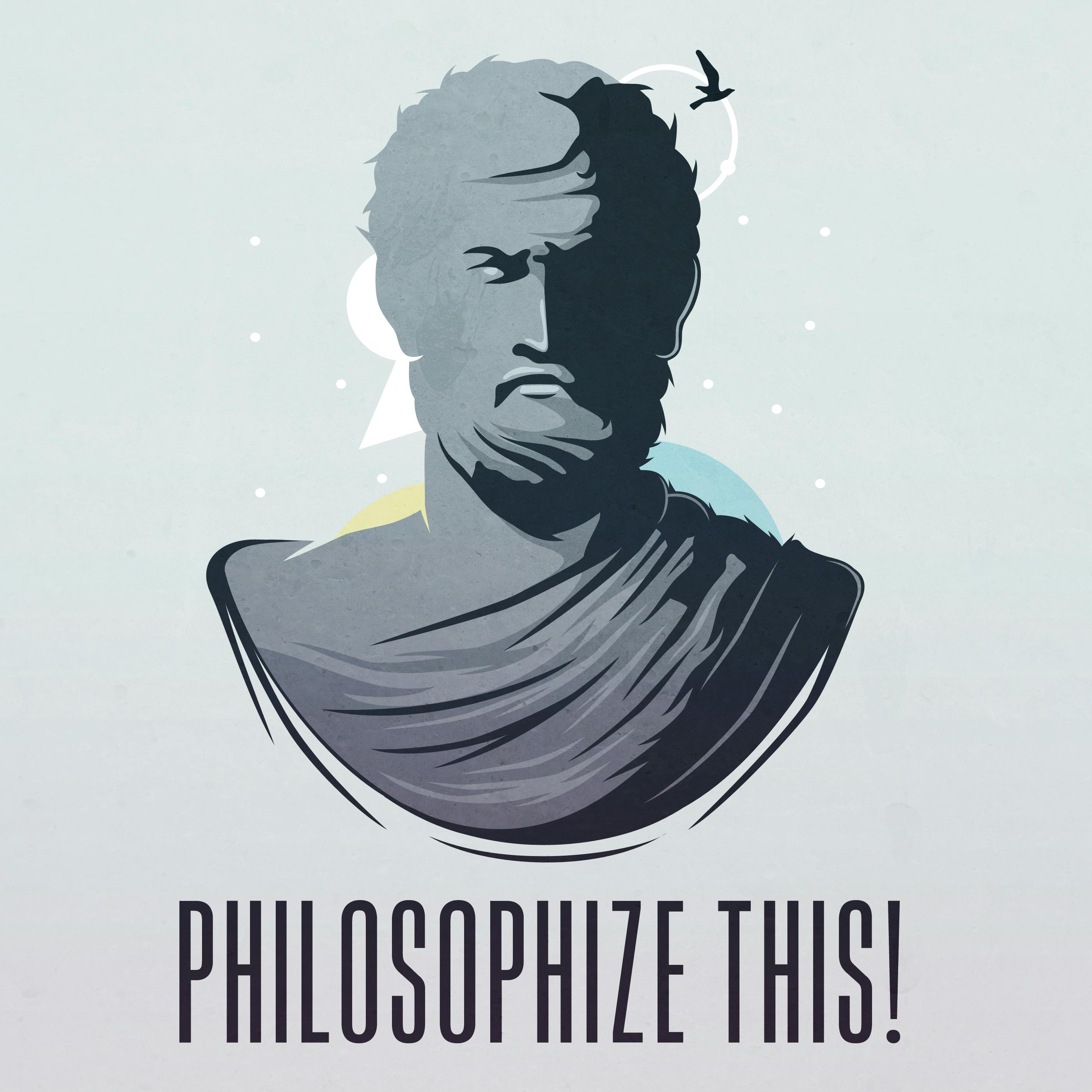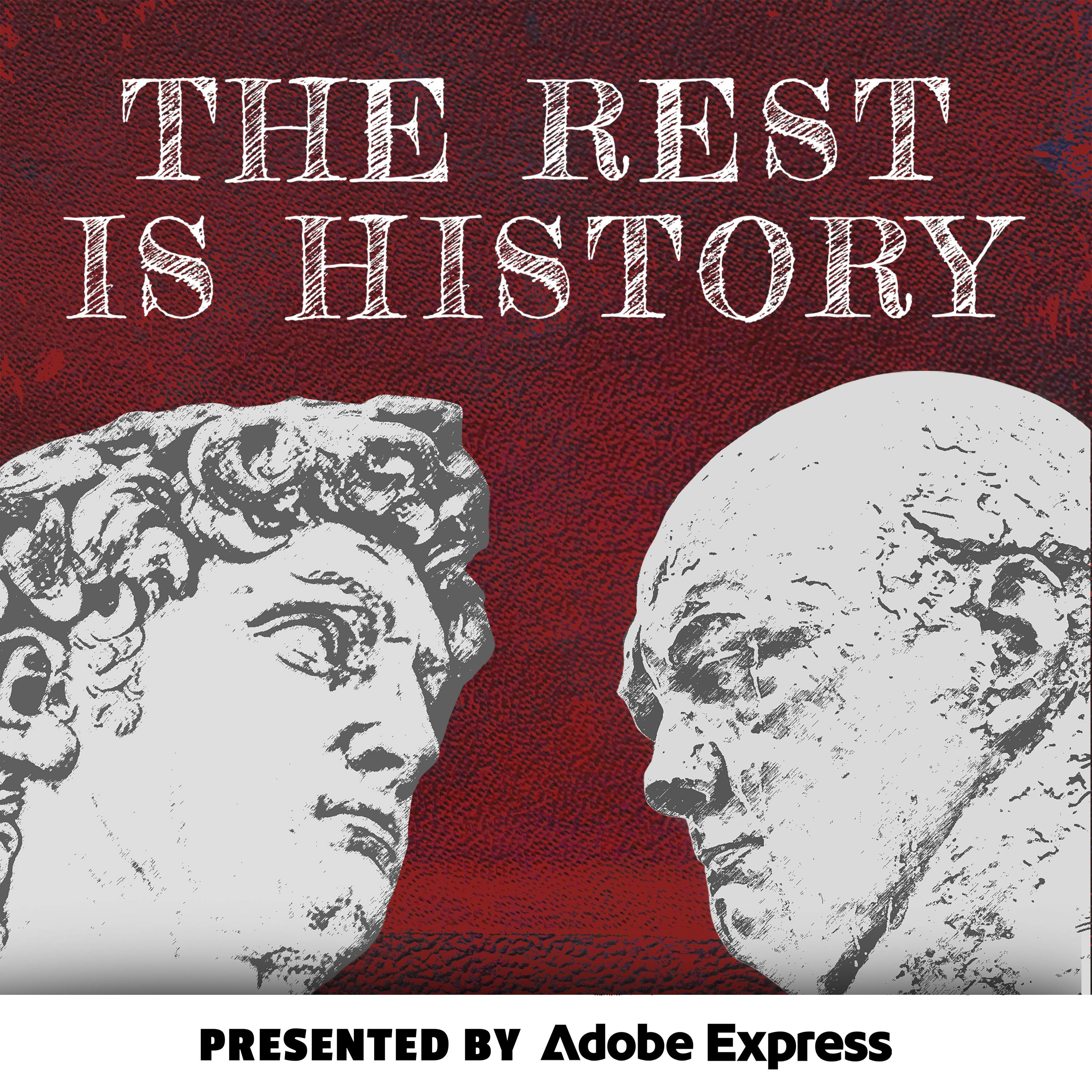
The Classic English Literature Podcast
The Classic English Literature Podcast
"Wise, Worthy, and Belle": Marie de France's "Lanval" (The Matter of Arthur, Part 2)
Perhaps the first great Arthurian romance to be written in England, Marie de France's "The Lay of Sir Lanval" is full of love, lies, secrets, and betrayals. With a bit of faery thrown in.
Please like, subscribe, and rate the podcast on Apple, Spotify, YouTube Music, or wherever you listen. Thank you!
Email: classicenglishliterature@gmail.com
Follow me on Instagram, Facebook, and YouTube.
If you enjoy the show, please consider supporting it with a small donation. Click the "Support the Show" button. So grateful!
Podcast Theme Music: "Rejoice" by G.F. Handel, perf. The Advent Chamber Orchestra
Subcast Theme Music: "Sons of the Brave" by Thomas Bidgood, perf. The Band of the Irish Guards
Sound effects and incidental music: Freesounds.org
My thanks and appreciation to all the generous providers!
Hello, everybody! Good to see you. Welcome to the Classic English Literature Podcast. Today, episode 7: “Worthy, Wise, and Belle”: Marie de France’s “Lanval.”
Please like, subscribe to, share, and support the podcast. Follow me on all your instatwitface social networks. Thanks ever so.
When last we spoke, we looked at the rather honeyed version of the King Arthur of history, especially in Geoffrey of Monmouth’s Latin prose Historia Regum Britanniae and Layamon’s English poetic Brut. While the former presented itself as serious history, its claim was scoffed even in the 12th century. Nonetheless, it continued to exercise enormous authority as a legitimate, and legitimizing, account of a Britain rooted in the peoples of northern France, and inspired Layamon’s narrative poem.
At the end of that episode, I floated some loose questions about the role and motivations of Wenhaver (or Guinevere), Arthur’s wife and queen. She is central to the legendary histories, but very much as a support player, and I’m always curious to know more about characters who just tease us with a glimpse of their fullness. As a woman in an immoderately masculine culture, hints and conjecture are the best we can manage.
But in today’s poem – “Lanval” by Marie de France – the women are far and away the most fascinating and, I think, powerful players. For good and ill, as we shall see.
Marie de France herself is something of a mystery. Clearly a well-educated French woman who wrote mainly in England, with some connection to the royal court, we’ve no reliable information as to her identity, but there are some tasty suggestions (maybe an illegitimate half-sister to King Henry II). Ooh-la, and as it were, la. She does her work in the later decades of the 12th century, a generation or so after Monmouth and Layamon. Her most famous work, The Lays, was probably dedicated to her brother-king and exists in the same manuscript that contains “The Cuckoo Song” that we sang together round the campfire a couple of episodes ago.
A “lay,” incidentally, is a short narrative poem – a romance – and usually written in octosyllabic couplets and often performed with a musical accompaniment. Usually, the subject matter derives from Celtic origins. Marie’s are among the earliest extant examples of the type, and certainly among the best. She claims that she has transcribed old lays connected to Brittany, though no sources have made it down to us. She writes in the prologue:
I did not doubt, indeed I knew well,
that those who first began them
and sent them forth
composed them in order to preserve
adventures they had heard.
Like some of earlier texts, these lays live in the boundary between oral and literate cultures, and writing is seen as a technology for preservation. This implies, of course, that Breton tellers circulated these stories of Arthur well before Geoffrey of Monmouth put quill to parchment. Even earlier evidence of Arthur legends comes not in story and song, but in architecture, and not in northern France, but in Italy. The archivolt of Modena Cathedral’s north entry, the Porta della Pescheria, contains pictorial carvings dating to the dawn of the 12th century with identified characters Artus de Bretania, Winlogee (Guinevere), and Galvagin (Galahad). I’ll pop up a photo on the social media pages.
I’m going to focus on just one of Marie’s lays – the most famous one – “The Lay of Sir Lanval.” Here’s the short and sweet:
Once upon a time, it was a long time ago a knight named Lanval lived in King Arthur’s court. He was gentle and noble, courageous, and quite the handsome fella. But Arthur and the other knights neglected and even scorned him, for he was poor and foreign. Head hung low, he decides to ride into the forest by himself. Perhaps for a good cry.
Resting by a secluded stream, two damoiselles (I love that word) come to say they must take him to their mistress, whom we understand to be some Fairy Queen, though it is never explicitly stated. He goes, of course, because boys will do anything they are told by pretty girls. Not complex creatures. The Lady’s tent is certainly a flash crib:priceless furniture, bed-linens, and a conspicuous dearth of clothing! Ooh! get away! “I love you, Lanval,” she coos, promising him great success for his whole life. They make love, and then she issues her condition. Like Mrs. Robinson, smoking her cigarette, the Lady orders Lanval to never tell anyone of their love. Lanval agrees, because boys will do anything for a pretty girl. They dine and Lanval returns to court. He then starts mysteriously receiving some of the swankiest swag ever, wild luxuries. Of course, ostentatious wealth is a great provoker of popularity and Lanval’s social calendar swells.
One day, when Lanval is playing with his new friends, Queen Guinevere decides to seduce Lanval. Lanval immediately refuses, shocked at her disloyalty to the king. Pretty girl refused – plot twist!. Guinevere naturally decides he must be gay, accuses him of preferring boys – generally questioning his red-blooded manliness. “I am not!” Lanval vehemently retorts, “In fact, my love is prettier than you! Her lowest serving wench is prettier than you!” I can see him futilely clutching at the air trying to get those words back. Guinevere, in a classic diva move, takes to bed ill, telling her husband that her honor must be avenged.
Lanval returns to his chamber and tries to summon his Lady, but in vain. Arthur then demands Lanval’s explanation for his boorish behavior. Lanval tells Arthur the truth, that he met a mysterious and beautiful Lady in the woods, that Guinevere tried to seduce him, and that he refused her out of loyalty to Arthur and the Lady. Quite understandably, Arthur’s mind boggles, so he seeks counsel from his knights.
The day of the trial arrives; Lanval appears again before Arthur and the barons who were to decide his fate. In the back of the room, several women appear on horseback, causing much uproar and consternation, heralding the arrival of their mistress, the Lady. She enters the courtroom, striking the assembly dumb with her elegance and beauty. She confirms Lanval’s testimony, and the court finds for his innocence. The Lady then takes him away to a beautiful island, and they are never heard from again.
A number of things stand out to me in this story. One of the easiest to overlook is its depiction of Nature. In Anglo-Saxon poetry, especially the elegies, Nature is gloomy and harsh, at best indifferent to human endeavor and at times actively hostile. But in Marie’s romance, Nature is soft and pleasant and fertile. Lanval rests beside a gently running brook, his horse “grazing on the sward.” Marie invokes the fecundity of spring and its roses and lilies. Hawthorn blossoms. Not a big deal, probably, but we’ve seen precious little spring and summer in the literature so far, and its just nice to feel the sunshine again. Listen carefully for farting bucks.
Also quite prominent is the social dynamic of the outsider, the other. Lanval is Breton, a foreigner. And he is poor, a landless son who has been, in some ways, thrust upon the court. Arthur lavishes patronage on all his knights, but ignores Lanval: “him he forgot. His men disliked him, too; the lot / were envious of his handsomeness / His strength, his courage, his largesse.” From here on, Marie provides constant reminders of Lanval’s outsider status. He is “a foreigner filled with care / and sadness in a distant land.” He “went to ride / Alone in the countryside.” He sometimes “goes off alone and / Turns aside from all the rest.” A “foreigner, he felt chagrin / Since he had neither friend nor kin.” All right, I reckon you get the point. But in a world constructed around male bonding and comradeship – that famous Round Table – Marie stresses Lanval’s isolation. Yet, as any good storyteller would, she also makes him the normative center of such a world’s ethic: she says of Lanval that he is “the soul of courtesy.” So the outcast is actually the epitome of chivalry.
I’m also struck by Marie’s constant use of the language of exchange, of commerce and consumption. When Lanval and the Lady consummate their love, followed by her warning to never speak of it, the words have an economic tenor. She “bestowed on him her heart / And her body, every part.” Her admonition: “You shall never again see me / Nor have my body in your fee.” She speaks of lovers “possessing” each other. Common enough language, I suppose, in colloquial speech, or even in drug store bodice-rippers. But here it feels as though Marie is setting up an analogy between sexual relations and commerce that goes to the heart of her critique of Anglo-Norman society. We’ll get to that presently. But note also the detail she lavishes upon the descriptions of the Lady’s pavilion, and the fabrics, and the foods. When first we meet her, her opulence and grace exceeds that of Queen Semiramis of ancient Assyria and Octavian, the Emperor Augustus of Rome. When the lady reappears at the end, during Lanval’s trial, Marie goes to exceptional lengths to describe the ultimate accoutrements of the ultimate lady:
A mantle was around her drawn,
A cloak of deep-dyed purple lawn.
A falcon on her wrist sat still;
A greyhound followed her at will.
Her cloak is purple – the color of royalty and power going back at least to the Roman emperors. The color was extraordinarily expensive to produce and so reserved for those of the highest status. The falcon, the medieval sport of the nobility, similarly signifies power and majesty. It is, also, of course, fearsome. There is a long and complex allegorical tradition that links the hunting dance between predator and prey with the sexual exptression of love. The greyhound, in medieval heraldry, indicated courtly virtues of courage, vigilance, and loyalty, in curious contradistinction here to Guinevere’s perjury.
This all follows a rather lengthy (re)description of the Lady’s physical beauty. Throughout the poem, the language of looking permeates the poem, to such a degree that it works with the language of commodity and exchange. To look at something is to possess it or to be possessed by it. Upon their first encounter, we are told that the Lady’s loveliness “transfixed” Lanval’s “gaze.” Remember too that the Lady uses the verb “to see” when she warns Lanval to keep mum: “You shall never again see me.” Sight and possession and sexual congress are all implied here. Check the Lady’s entrance to court:
In town was neither high nor low,
Old man or child, who did not go
And line the streets along the way
To watch as she made her entree.
And as they stood gazing at her,
Her beauty was no laughing matter.
The judges, seeing her, were wholly
Astonished at that spectacle
And held it for a miracle.
And the Lady’s coup de grace before the enraptured court? “Softly, she let the mantle fall, / The better to be seen by all.” Phew! And so on and so on and so on. Even when Guinevere decides to seduce Lanval, that too is visually stimulated: “She gazed at Lanval and knew him well.” Knew what? Oh, you know!
I suppose it’s easy here to think, “Well, isn’t that typical? A woman’s only social power or value is in her beauty and sexuality! We still live with it today: photo-shopped magazine models, Tik-Tok influencers, and a shocking rise in eating disorders, body image issues, and the pornographication of interpersonal relationships. What’s new?” Indeed. I don’t deny that much of the sexualizing power of the visual gaze exercises its influence here. But I also think that Marie de France employs these very old social truths in more complex and, dare it say it?, disruptive ways.
First, one should note that men are not the active agents of this tale. Surely, they exercise military and political and judicial power, but they lack all psychological independence and ingenuity. They are nearly mindless drones, working according to their programming. When Arthur is confronted by two differing versions of the tete a tete between his wife and Lanval, he becomes incapacitated and turns to his barons to sort the mess out.
But the Lady and Guinevere choose to act, and do so for their own reasons and gratifications. The Lady seduces Lanval – she reverses the typical arrangement. So, too, does Guinevere, though unsuccessfully. Even the Lady’s attendants order the men about, summoning here and there. While the men have strength, they seem to me little better than beasts of burden. It’s not so much that they wield power as that they merely produce it, and that power is consumed and exercised by the dominant women in the tale.
Now, of course, that power, that agency, is clearly sexualized. No escaping that. But I think Marie gives us a wink and a knowing nod here, too. Have you ever heard of Potiphar’s wife, from the Book of Genesis in the Bible. Look it up sometime. Chapter 39 – it’s a trashy little tale. Briefly, Joseph is a slave in the house of Potiphar, the captain of Pharoah’s guard. Joseph, being a precocious young lad, gets made head of the household and his youthful good looks catch the eye of Potiphar’s wife. She tries to seduce him, he refuses, she cries rape, and Joseph ends up in prison. Don’t worry, compassionate listener, things work out. No spoilers here, though.
Anyway, Marie takes that Biblical story with her tongue planted firmly in her cheek as she sets up Guinevere – whom we think of as the archetype of the romantic, courtly queen – and makes her, basically, a Real Housewife of Camelot.
I know, I know. We don’t have Camelot at this point in the literary history, but the joke wouldn’t work otherwise.
So, yes, we do have the classic tropes of the sex-hungry housewife and the unimpeachably gorgeous fairy queen, we have the villainous (albeit comically, I think, in this case) and the authoritative. In fact, the whole plot of the piece reverses the typical “damsel in distress” story. Lanval is the damsel rescued by the Lady. It’s an elegant bit of narrative volte-face.
But lest we think, on the other hand, that Marie errs on the other side of the gender critique, we should also remember that though Lanval’s Lady is beautiful, authoritative, and generous, she also emasculates him (figuratively, of course). Her rescue effectively strips him of his knightliness and, combining that with Guinevere’s accusations of homosexuality, we should be reminded of this society’s anxiety about destabilized masculinity, as we saw in Monmouth and Layamon.
It is always a mistake, I think, for readers to project anachronistic cultural values on the literature of the past. It’s difficult to avoid, surely, and I know I do it all the time, but we will always be disappointed if we seek to find in writers of the past heroic avatars of our modern political or social obsessions. Writers are not policy makers – Marie de France is not a protofeminist – they are artists who traffic in the ambiguities inherent in language and in life. And, in that sense, are more progressive and transcendental than any mere social program. What Marie does excellently well is use love and eroticism as the lens through which she examines the role of the individual in the larger society.
If you’ve enjoyed today’s episode, please consider supporting the show. Thanks very much for your time – I hope you feel it was well spent. I look forward to talking with you again next time. Till then, all the best!
Oh, wait! Wait! I forgot to tell you something. There is a little bonus addendum to our last episode about the Arthur of pseudo-history.
As I was puddling around with some research, I came across a book that mentioned a really interesting fragment of text relating to Arthur’s death. It’s probably from before the year 1191, because it notes that Arthur’s grave is in Gwynedd, not Glastonbury (as discoverers claimed in that year). It’s headed “This is the true story of Arthur’s death” and it offers a more interesting account than Geoffrey of Monmouth’s rather lackluster death scene. It then links to the chapter following Arthur’s passing in the History of the kings of Britain. So it seems someone, a cleric probably, inserted this bit of text because he was dissatisfied with the way Monmouth told the story.
What we have is loaded with bloody obvious Christian and Biblical allusions. Arthur dies of a spear thrust by an unknown youth, which was anointed with a serpent's venom. He is then buried in a tomb as a powerful storm rises and darkness settles across the land from 9 in the morning to 3 in the afternoon (rather like the supposed eclipse at Jesus’ crucifixion). Arthur’s body, like the Virgin Mary’s, is assumed into heaven – or maybe Avalon. Or maybe when he died the tomb simply transmogrified into a solid rock. Difficult to get folks here to agree on what happened. I quite enjoy the somewhat postmodern quandary of a text asserting itself as the “truth” and then going on to offer a multiplicity of explanations.
Be that as it may, what I really like is the idea of a random monk dropping in a bit of fan fiction in a book he thought needed a bit of a boost. At this early period, we do not find anything like a proprietary or “official” version of the Arthur story – or any story really, with the possible exception of the Bible (we’ll talk about the vicissitudes of English Biblical translations in future episodes). Stories never arrived at a fully formed and fixed shape in oral cultures – they were reinvented each time they were recited – little details, little emendations. There’s no reason to believe that incipient literacy would behave any differently.
We, after perhaps a millennium or more of Anglophonic literate culture, take as read that texts are fixed and stable phenomena. We assume there is the correct version of Austen’s Pride and Prejudice, and any variations are incorrect or faulty. Even in non-literary areas, we are obsessed with what we call “canon” – what belongs to the “real story?” The various iterations of storytelling that technology has availed to us allow for a rapidly expanding fictional universe. The new television shows, movies, and video games connected to, say, the Star Wars universe or the Marvel Comics universe – are they all “canon”? Is every novelization of a Star Wars film, even if it deviates from the film, are they canon? We have a keen sense of, or at least a keen desire to argue about, what belongs and what doesn’t to the official version of events in a given story. The new show based on Tolkien’s Middle-Earth, “The Rings of Power,” has exercised a number of critics and fans to debate how faithful it is to the original author’s vision and whether or not this story has an equal status to say, “The Hobbit.” Same thing with “The Game of Thrones” series (and its new spinoff, I suppose) when the TV show overran the novels – does George RR Martin now have creative control over his own storytelling universe?
Anyway, I think I’m getting a little rabbit-holey here, so I’ll ballpark. There is no canon of Arthur legends. They are very much “crowd-sourced.” Medieval storytellers had no conception of intellectual property. An anonymous priest can just stick a page with his version of events into a manuscript about King Arthur’s death and no one argues its potential copyright infringement, no one cries plagiarism. In this world, this twilight between orality and literacy, there are no authors, only content providers.
OK, you can go now.











